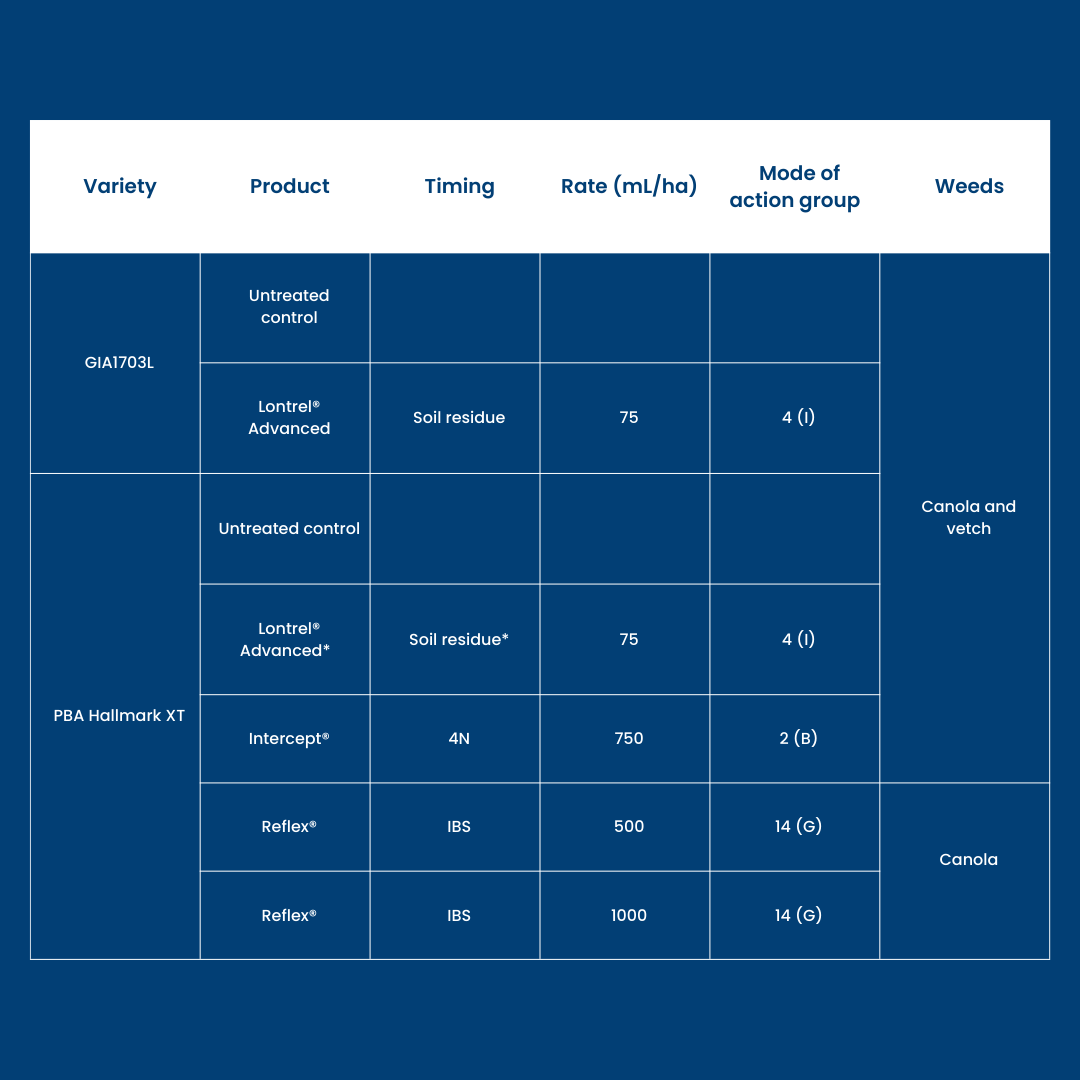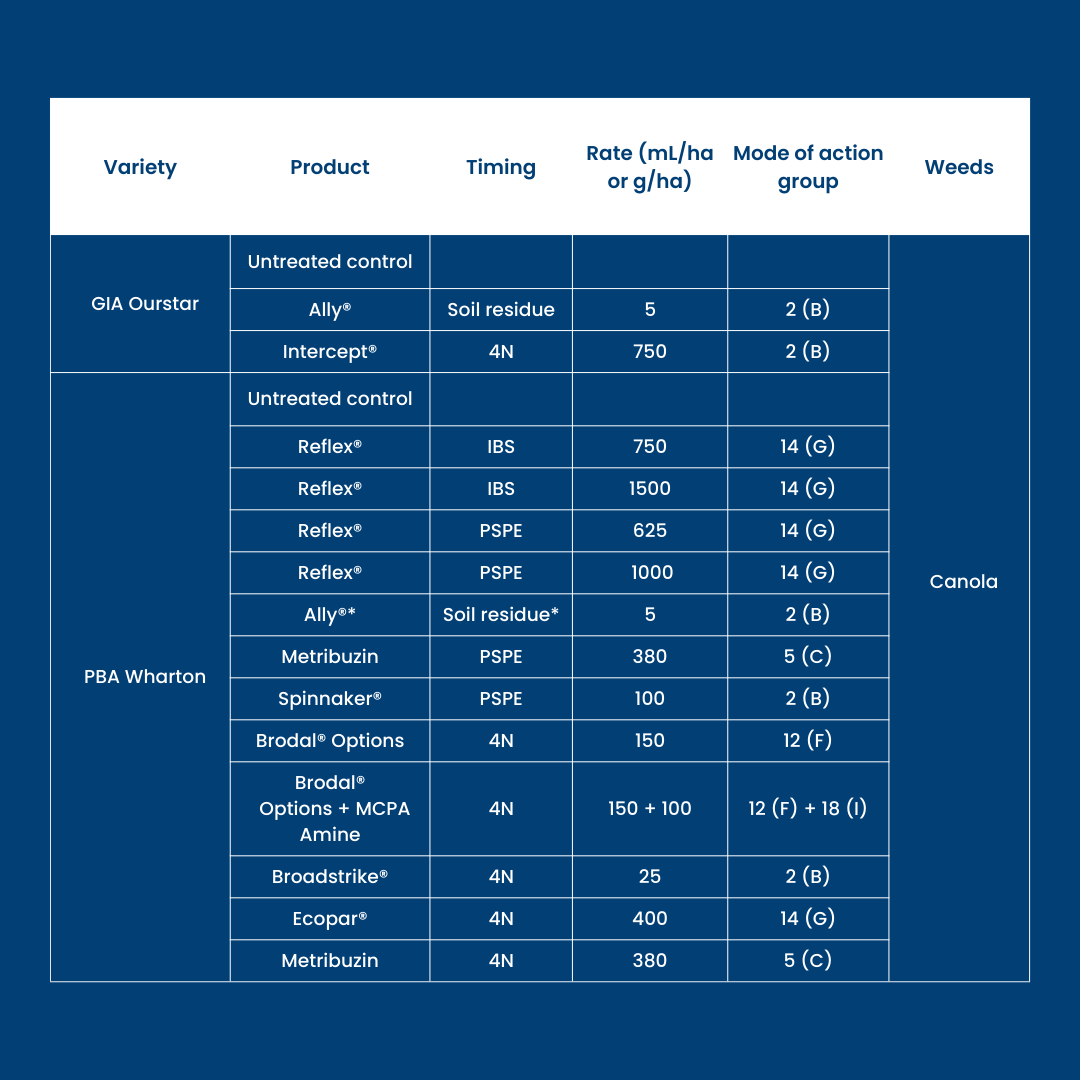Background
The Australian pulse industry is continuing to expand and pulses are now not only a suitable break crop option for cereal crops but are also a profitable crop in their own right. As a result, growers are moving towards rotations with a pulse grown within two or three years of the previous pulse crop.
Broadleaf weeds are often managed in the cereal rotation but in shorter pulse rotations many broadleaf weeds are still present in the pulse phase and need to be controlled in-season. With limited post-emergent herbicide options and pulse crops such as lentils not competing well with weeds, this has become a challenge.
Controlling volunteer pulses such as vetch in the subsequent year can also be difficult. A further challenge is the overuse of imi chemistry in the control of broadleaf weeds during the past 10 years and the development of resistant weeds as a result.
*Some of the herbicides used in this trial are not registered for use in certain crops and were tested for experimental purposes only. Always read the product label and adhere to directions when using herbicides.
Method
A replicated field trial was sown using a complete randomised block design.
The treatments are outlined in Table 1 and Table 2. Canola and vetch seed was broadcast before sowing the crop to imitate broadleaf weeds. Assessments included establishment scores, phototoxicity scores two weeks after spray applications, crop biomass, nodule counts on select treatments, and grain yield.


Application timings
Incorporated by sowing (IBS) 2 June 2021
Post sowing pre-emergent (PSPE) 2 June 2021
Post sowing pre-emergent (PSPE) 2 June 2021
Granulock® Supreme Z + Flutriafol (200mL/100kg) @ 60kg/ha applied at sowing.
